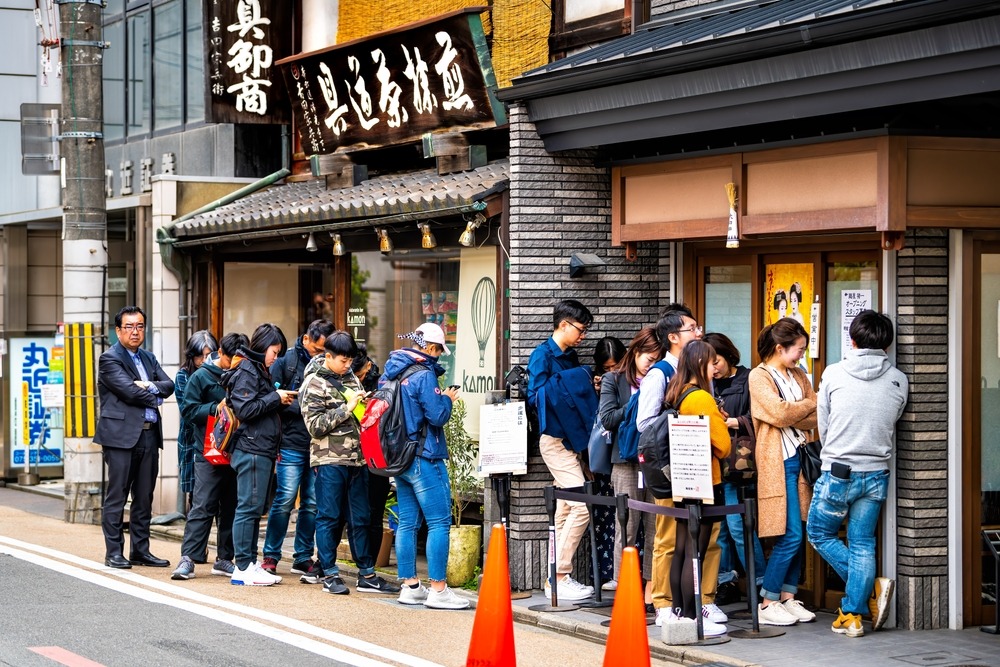In an age where TikTok “must-visit” restaurant lists can send tourists flocking to the same few spots, it can be hard to tell what’s worth your time and money when eating abroad.
With ‘#Dubaifood’ and ‘#Thailandfood’ videos racking up 147.3k and 45.5k views respectively*, there can also be too many options to sift through on socials.
Gianni Leone Senior Product Director and travel expert at Away Holidays and Chef Kevin Gratton, founder of Samphire + Sage and former chef at Soho House, HIX and Scott’s of Mayfair, share their insider tips on spotting the difference between a tourist trap and a true local gem – without relying on online reviews.
According to Kevin and Gianni, there’s no single magic formula, but there are plenty of subtle signs that can help you decide whether to sit down or when to keep walking
Location and queues
“The first thing I notice is the location of a restaurant, those that are in high footfall areas, near famous landmarks or attractions, main city centre spots where the most tourists gather, lend themselves to ’tourist traps’ with mediocre food at inflated prices – despite often looking busy. I’d also walk straight past a chain restaurant.” Says Kevin.
“Queues, meanwhile, can be a mixed signal. “If a place is buzzing, it might be worth it – but I don’t queue. I’d rather book somewhere and know I’ll be fed in a timely manner.”
Gianni adds, “It’s not to say you can’t find great dining experiences in these busy areas – they just tend to be slightly off the beaten path. If you’re in a popular tourist district, take a few turns down side alleys or quieter streets. Often, the most authentic spots are just a few minutes away from the crowds. If you spot a place you like the look of, cross-reference it quickly on social media to get a sense of atmosphere and reviews, you’ll often be able to tell in seconds if it’s worth trying.”
Style over substance and street tactics
Kevin warns against being seduced by style over substance: “If the décor looks like it was designed purely for Instagram, or the food presentation seems more about theatrics than taste, it’s a red flag for me. Great food doesn’t need a flower wall or neon sign to taste amazing.”
“Restaurants that try to lure you in from the street with discounts, free drinks or loud entrances are also a no-go,” he says. “I wouldn’t touch restaurants that call you in from the street with a barge pole. It looks way too desperate.”
You can’t always trust your sense of smell
Smell isn’t always reliable. “What if they’re cooking on induction in the basement?” Kevin points out. Instead, he focuses on the overall atmosphere: a warm welcome, an inviting ambience, and staff who genuinely love what they do. “You can spot it in their body language and sincerity.”
Gianni agrees, “When travelling, people often rely on smell as a shortcut for quality, but it’s not fool proof. Instead, take in the full picture: who’s dining here? Are the staff attentive without being pushy? Is the vibe relaxed rather than rushed? These subtle cues usually say more than a scent drifting from the kitchen.”
The menu test
For Kevin, a good menu is small and focused. “Huge menus often mean diluted quality. And if a place serves every cuisine under the sun, they should be shipped to the Moon,” he jokes.
“Multiple languages and lots of photos on menus often scream ‘jack of all trades, master of none.’ Before you travel, spend a few minutes researching the local cuisine so you know what authentic dishes to look for; that way, you’re not going in blind. A short, seasonal menu in the local language (perhaps with an English translation) is usually a very good sign.”
Locals, reviews & social media
Seeing locals dining is a good sign – but not the only one. “I’ll sometimes ask locals for tips, but I take it with a pinch of salt,” he says. He avoids Tripadvisor and Google reviews entirely, preferring foodie Instagram accounts and trusted travel publications. “A restaurant’s own Instagram is a goldmine – pictures tell a thousand words.”
Gianni adds “Social media can be a brilliant tool, but it’s also made certain places go viral, which can change their atmosphere overnight. The trick is to use it selectively. If you spot a place that catches your eye while exploring, check it on Instagram to see real diners’ photos and videos, or follow a few local foodie influencers who know the area well. This way, you’ll find gems that haven’t been swamped by the tourist trail yet.”
Golden rule
“Stay away from the tourist trap hotspots,” Kevin advises. “You’ll often find the best food where you least expect it.”
One of his own favourite finds? La Fontelina in Capri. “It’s on the other side of the island, so you either trek down the hill or take a yacht. I trekked. We were staying in Sorrento, so it was ferry, cable car, trek – and I loved it so much I did the whole trip again the next day.”
Experts’ favourite food spots to try
Gianni also shared some of his favourite food spots:
Dubai
- Ravi Restaurant, Satwa – A true Dubai institution serving authentic Pakistani dishes, far removed from the glitzy fine-dining scene. Loved by locals, taxi drivers, and chefs alike.
- Bu Qtair, Jumeirah – A humble beachside shack famous for its fried fish and curry. No frills, just excellent fresh seafood that keeps locals coming back.
Thailand (Bangkok)
- Jay Fai, Bangkok Old Town – Michelin-starred street food icon known for crab omelette, but still very much a local spot with a no-nonsense vibe.
- Thip Samai Pad Thai, Bangkok – Family-run since 1966, known as “the best Pad Thai in Bangkok” among locals, far from tourist-inflated menus.
Capri, Italy
- La Fontelina, Capri – Kevin Gratton’s personal favourite, only reachable by boat or cliff trek — rustic, authentic, and worth the effort.
- Da Paolino, Capri – Known as the “lemon grove restaurant,” this family-run spot serves classic Neapolitan cuisine in a unique setting under lemon trees.
Tokyo, Japan
- Toriki, Sumida – Yakitori specialist with a Michelin star, but still intimate and reasonably priced compared with Tokyo’s luxury scene.
- Nabezo Shinjuku 3 Chome – A locals’ go-to for shabu-shabu and sukiyaki, with friendly service and set menus that feel authentic, not tourist-focused.
Marrakech, Morocco
- Amal Women’s Training Centre & Restaurant – A social enterprise run by local women, offering authentic Moroccan dishes while supporting community initiatives.
- Chez Lamine Hadj Mustapha – Famous among Marrakchis for its mechoui (slow-roasted lamb), tucked away from the main tourist drag of Jemaa el-Fnaa.
New York City, USA
- Joe’s Shanghai (Chinatown) – Home of the original soup dumplings; often busy, but still beloved by New Yorkers.
- Katz’s Delicatessen (Lower East Side) – Iconic but still authentic; queues are long, but it’s the benchmark for pastrami sandwiches.


